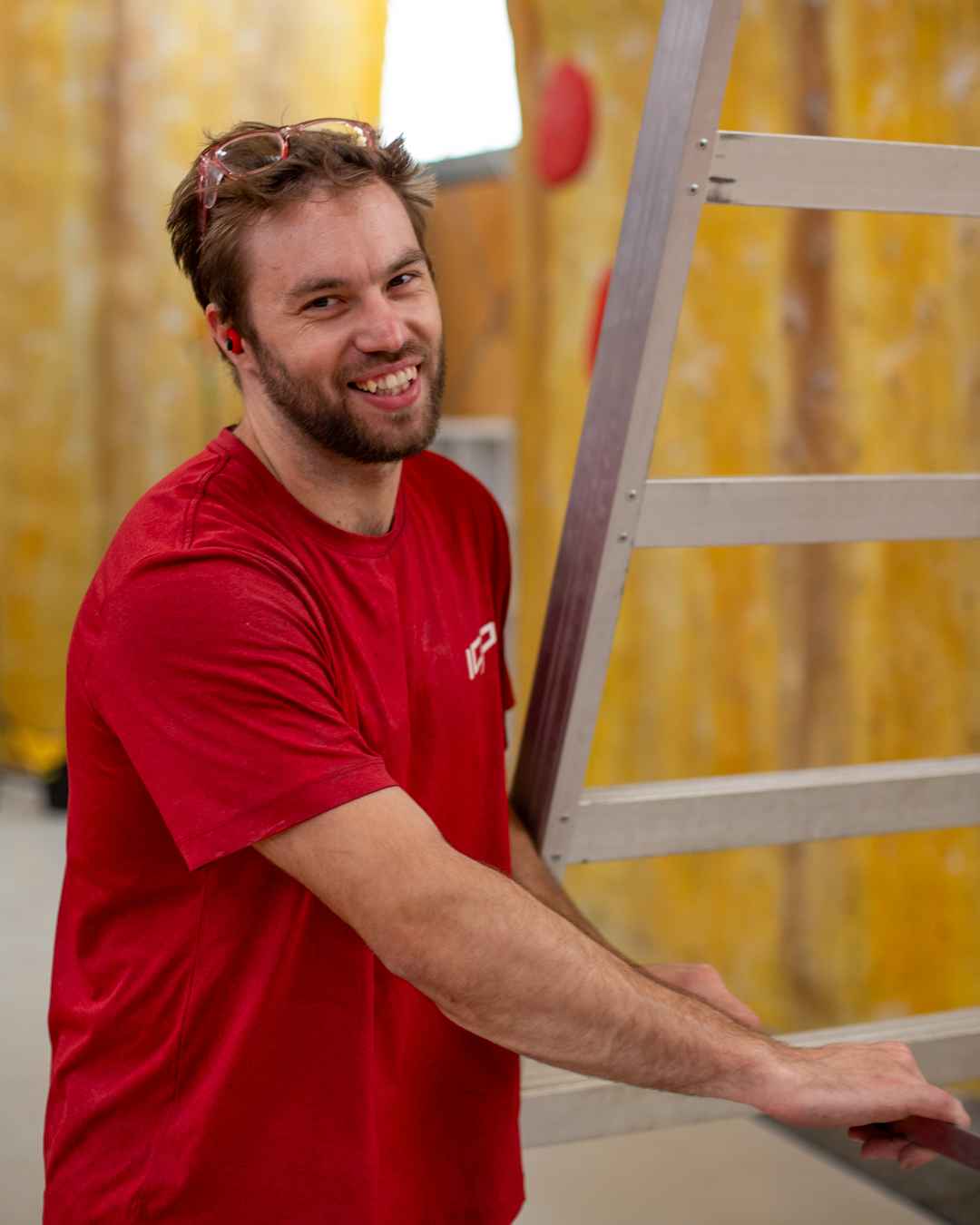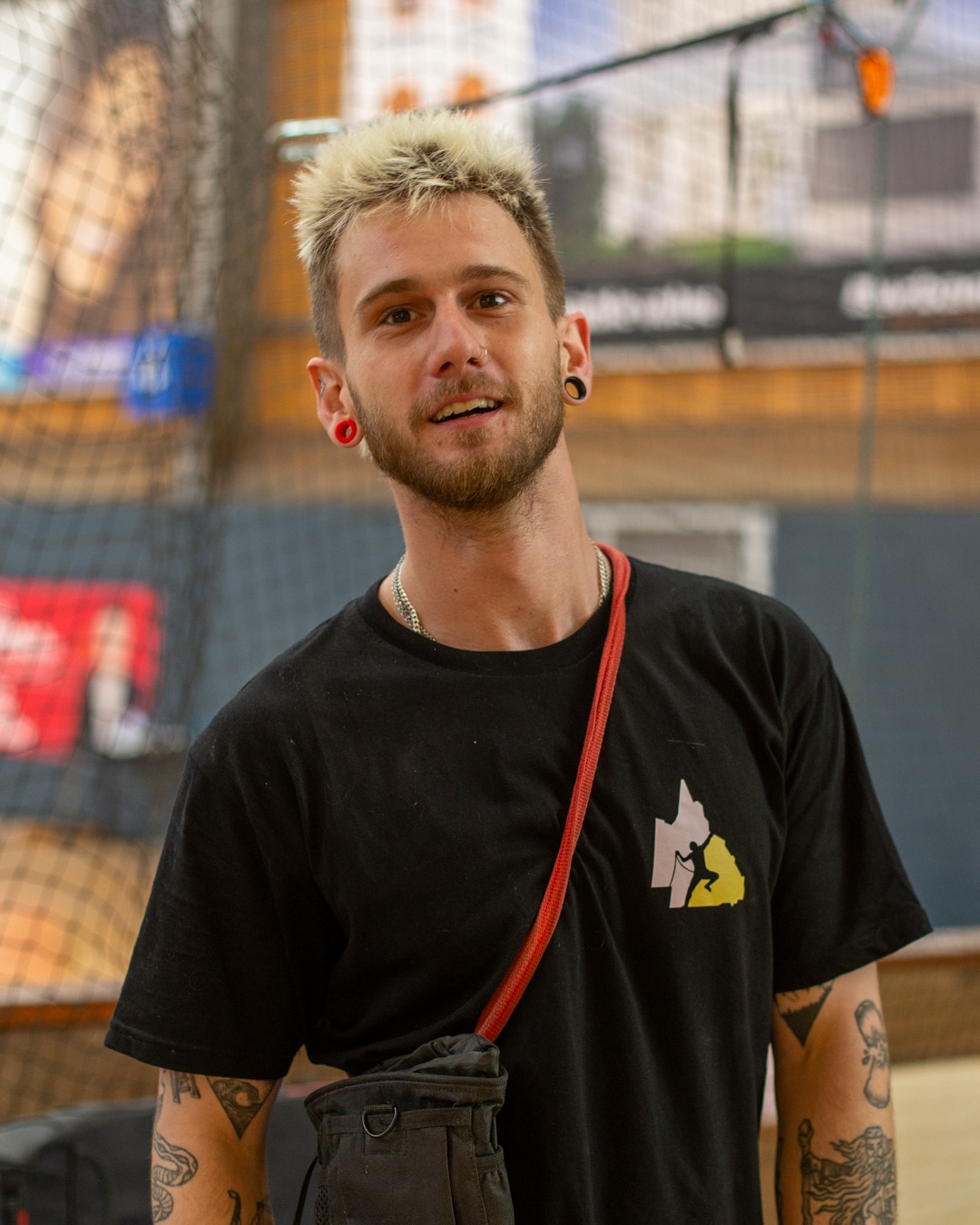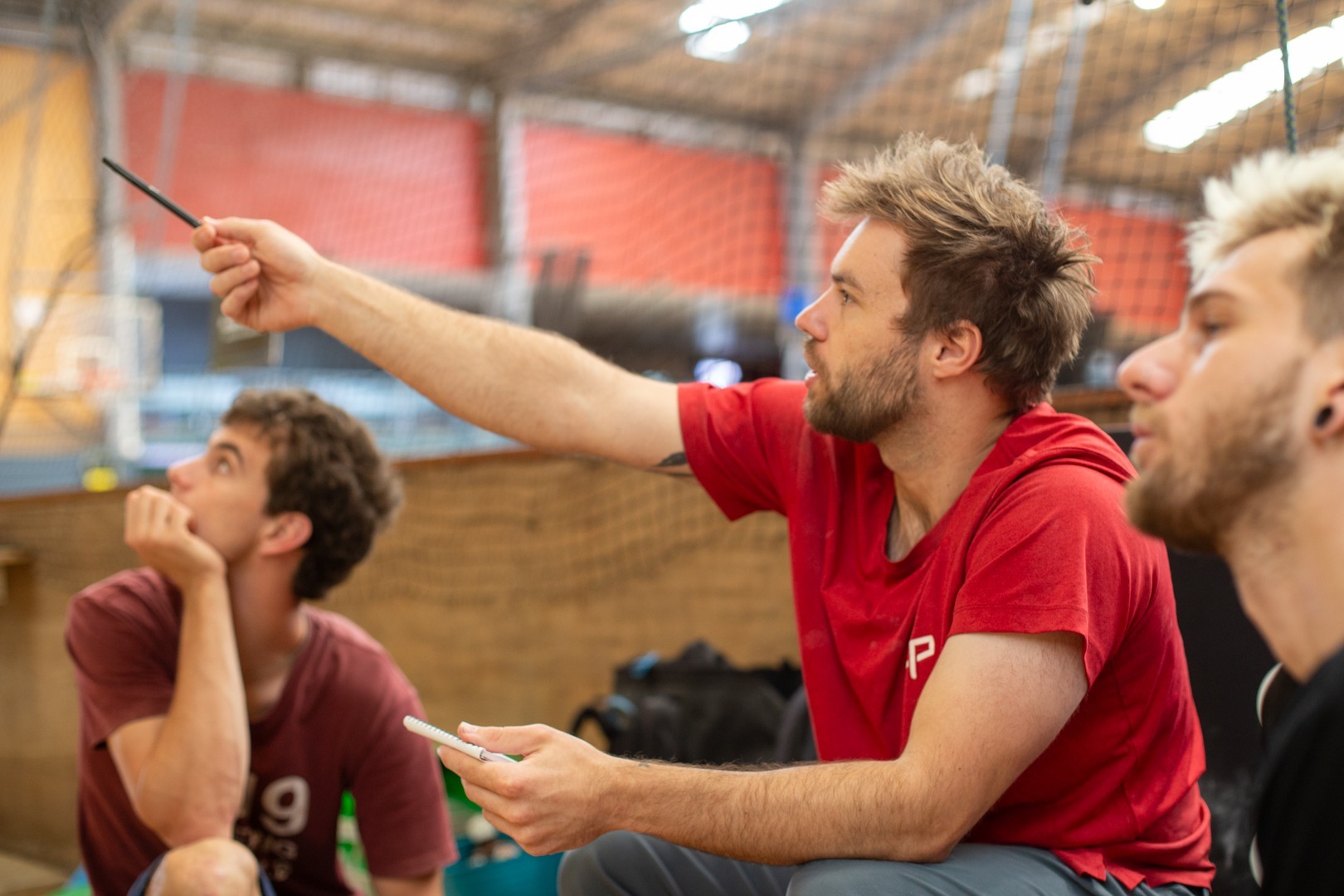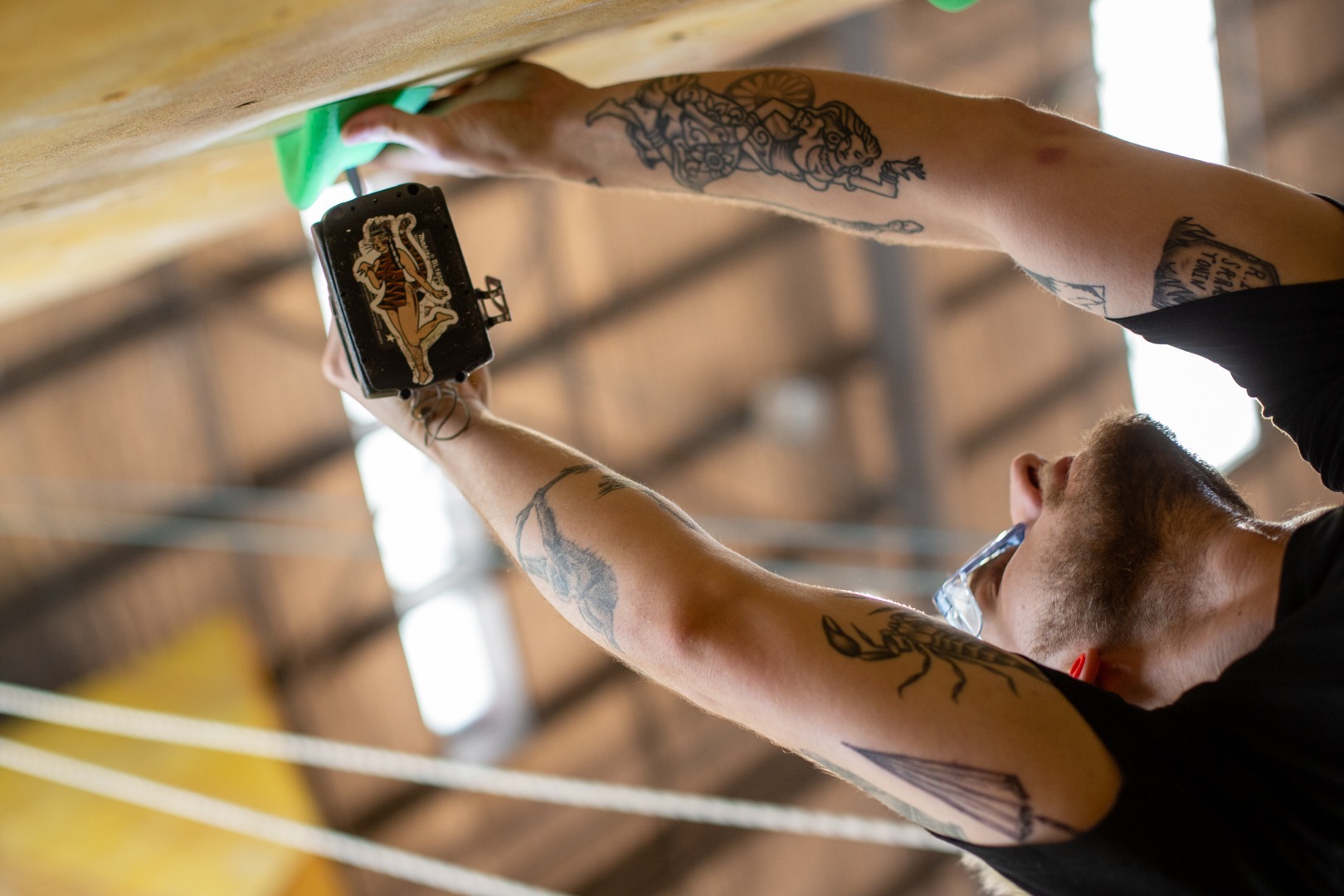The latest Queensland State Youth Lead Competition, which took place last weekend at Core Climbing in Cornubia, was a resounding success. The exceptional atmosphere, talented climbers, and challenging routes were all made possible thanks to the remarkable efforts of Queensland State’s route-setting team, comprising of our very own ICP Head Route Setter, Mitch, and Route Setter, Darcy.
In light of yet another remarkable competition, we sat down with our two experienced route setters to discuss what it takes to be a Queensland State route setter.

Mitchell Keft
Head Setter

Darcy Lawson
Route Setter
1. How long have you been setting, and how many competitions have you set for?
Mitch:
I began route setting once a week during high school back in 2008. However, it wasn’t until 2012, after graduating, that it became a career path for me. I started setting multiple days a week on both ropes and boulders. During my youth climbing days, I actively competed. As my competitive career came to an end, I shifted more towards assisting in route setting for competitions. I began by stripping routes and being a tester/forerunner before progressing into setting for various competitions. In the past few years, I’ve been head setting for two state competitions annually, totalling around seven or so state competitions since 2020. I have also set social competitions nationwide, including Core’s Bouldermania, Beyond Bouldering’s competition, and also early Urban Climb Boulderfests.
Darcy:
I’ve been setting commercially for approximately six years. To date, I’ve set for 10 competitions, including youth and open lead states, youth boulder states, Bouldermania 1-4, and a few Rocksports social events.
2. What does it take to be a good competition setter?
Mitch:
A good competition setter must be open and willing to push the boundaries of what they are setting. They also need to think quickly to tweak or fix any issues that arise because setting for competitions doesn’t allow for a lot of time. Moreover, it’s essential to have fun with your team and put your all into testing and creating.
Darcy:
Grit. Setting is already a physically and mentally demanding job, but competition setting involves even longer days, more testing, and increased overall stress. Not everyone can push themselves both mentally and physically to the extent required for competition setting.

3. What do you focus on when setting for a competition, and what makes for a good competition route?
Mitch:
When setting routes for competitions, our focus lies in providing challenges that test climbers in various aspects of their skills. Our aim is to create routes that are both demanding and sustained, avoiding clear-cut cruxes or moves that lead to a high percentage of competitors falling. The ultimate objective is to achieve a well-balanced distribution of results among competitors. Additionally, we strive to craft visually stunning routes, sometimes even bordering on the seemingly impossible, which makes it all the more impressive when a climber successfully conquers them. Throughout this process, we also continually put our own skills as setters to the test, ensuring that the competition’s routes are both challenging and rewarding for all participants.
Darcy:
My primary focus when setting for competitions is to test competitors as fairly as possible. In an ideal scenario, the most well-rounded climber should emerge as the winner. The competition round itself should assess as many facets of climbing as possible, such as balance, route reading, coordination, and power. The climber’s height should never be a factor. As for individual routes, our goal is to split the field to identify a winner. A good competition route should always keep climbers on their toes, providing a sense of insecurity, where they might fall off at any moment. It should be engaging from start to finish, both for the competitors and the spectators.
4. What are your favourite hold brands to set with for competitions?
Mitch:
In all honesty, you can’t go wrong with Flathold; the Damage Control sets are among my favourites to set with, along with the revival fibreglass range. A close second would be Xcult. I appreciate these brands not only for their functional qualities but also for their visually appealing designs. They always look and climb cool.
Darcy:
I have a strong preference for Flathold and ICP Volumes as my go-to holds for competition setting. Flathold stands out for its versatility and the wide array of dual-texture holds it offers. This dual-texture feature is especially useful for forcing specific movements. Additionally, I find ICP Volumes to be perfect for seamlessly and aesthetically altering the wall angles, providing a fantastic tool for competition setting.
The dedication and expertise of Queensland State route setters, Mitch and Darcy, shine through in their commitment to delivering exceptional competition boulders. Their skills will be on display at the upcoming ICP Social Series: Knock On Wood and FLOW Bouldering Gym: NEON Nights Social Event. Also for those eager to experience their creations firsthand, you can always put their boulders to the test at the ICP Boulder Hall anytime. Get ready for some exciting climbing challenges!



